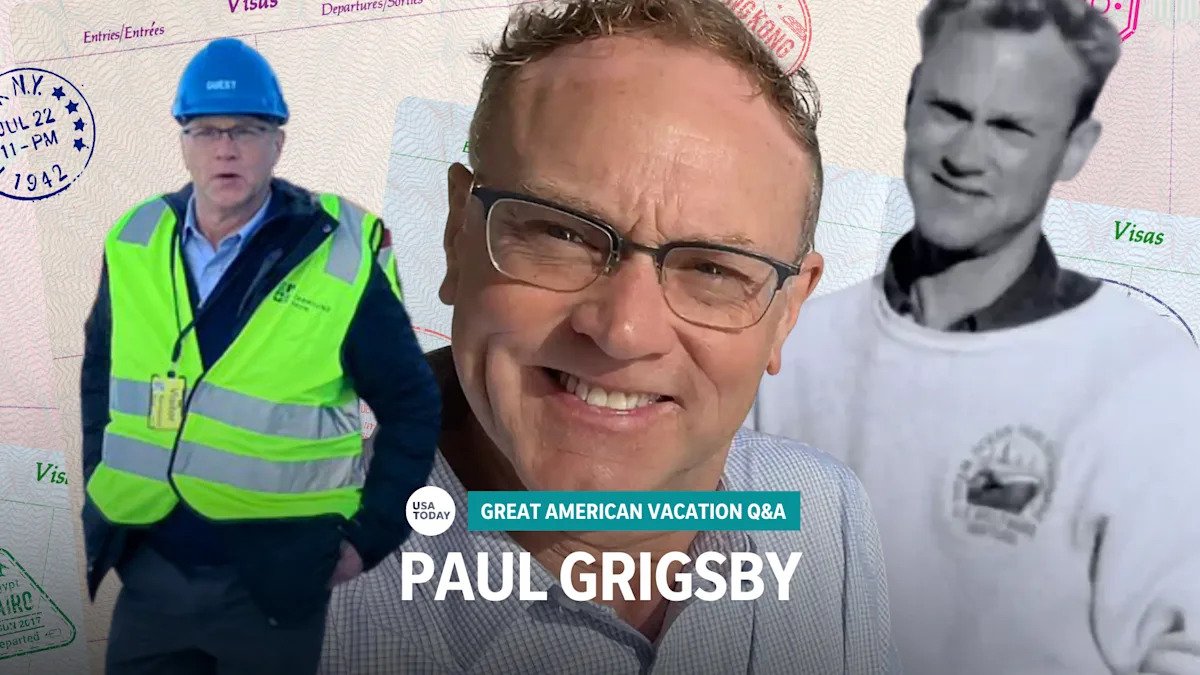Trip Planning
Travel assistant for Tokyo trip

Two years ago, I decided to take better care of myself and (re)start long-distance running. I trained to run half-marathon races again, and then I quickly realized marathon races were within reach. I’ve now run several half-marathon races, and that distance is now part of my regular weekend running schedule. I’ve completed three marathons, and I’m not going to stop.
I could always run without entering races, but there’s a great side-effect of joining competitions that I happen to love: the travel that goes with it. With marathon races, I set aside a few days of recovery right after the race, which I use to go sightseeing.
I’m telling you all that because I’ve just raced the Tokyo marathon, which was incredible and a little harder than I had planned. But I’m not about to tell you what went right and wrong and what sort of tech I used. I did that with previous races.
I will show you how I used ChatGPT Deep Research to visit Tokyo the week after the race and make the most of it. Now that I have used OpenAI’s AI agent as a travel assistant, I realize how amazing it is to have AI at your fingertips to help you plan your next trip that way.
I used ChatGPT to prepare for the trip long before I actually got Deep Research access. The feature launched only a few weeks ago and was exclusive to ChatGPT Pro users. That’s the $200/month ChatGPT subscription, which I can’t justify for my current needs. I waited for OpenAI to make it available to the ChatGPT Plus tier, which costs a tenth of that.
When a friend asked what I would visit in Japan, I said I already had chats with ChatGPT about it, but I didn’t have a specific plan. It all depended on how the marathon race would go and how I would feel in the days following it.
At the time, I had no idea that Deep Research would become available during my stay in Tokyo. But I knew I would integrate museum visits into my trip, as that’s something I always do when I travel.
My first prompt to ChatGPT (GPT-4o) was extremely simple. I asked for a list of the best museums in Tokyo. I wanted all the details about each of them, including their size. In the days following marathon races, I’ll reduce my walking significantly to give my legs time to recover, so my priority was visiting places that wouldn’t require that much walking.
As you can see above, ChatGPT gave me the answers I needed. It listed 20 suggestions, even though I didn’t ask for a specific number.
Before generative AI programs like ChatGPT were a thing, I’d have tackled this problem by buying a guide (in print or app) and looking at travel blogs for suggestions. But now that ChatGPT exists, I ignored all of that and trusted the AI to surface the information I needed.
I was working with this chat in Tokyo when Deep Research became available to my account. Again, I’m a ChatGPT Plus user in Europe, so I had to wait a while for OpenAI to bring Deep Research to my neck of the woods.
Speaking of location, ChatGPT isn’t available in Japan. Use a VPN while you’re there, and you won’t have a problem accessing the AI.
When the Deep Research button appeared in the ChatGPT composer, I changed my strategy. I started a different chat and gave the AI a more detailed prompt.
I asked ChatGPT to provide me with a list of 20 museums to visit during a 7-day trip. Walking distance was a priority, but I also told the AI to consider local travel passes that would give me free or cheaper access to these museums. I also told ChatGPT to include attractions that aren’t covered by passes so as not to miss other exciting options.
Deep Research went to work, but only after asking a few additional questions. ChatGPT wanted to know what sort of museums I preferred, whether I wanted interactive exhibits, and whether the travel pass should cover public transit in addition to museum fees. I answered the questions, and Deep Research went to work while I prepared for my day.
The research took 17 minutes to complete, with ChatGPT inspecting 52 sources to give me a detailed Tokyo museum guide that met my needs.
The resulting report was amazing and overwhelming at the same time. I reviewed the recommendations over breakfast, trying to figure out how to put them to good use.
Guess what you should do once ChatGPT compiles such a travel guide for you? Ask more questions. That’s what I did. First, I told the AI to arrange the museums by pass type. Then, I started asking questions about locations. I also wanted to be as efficient as possible when moving from one place to another.
For example, I wanted to visit the Imperial Gardens, so I told the AI to give me the closest museums ranked by descending closing time from the Deep Research list.
I also asked ChatGPT to arrange the museums in proximity to each other so I could figure out daily itineraries. Again, I wanted to be as efficient as possible and make the most of each day. I didn’t want to walk any more than necessary between locations, especially in a massive city like Tokyo.
I could have told the ChatGPT to create itineraries for me, but I didn’t want the AI to completely dictate how I would spend my days in Tokyo.
My point is that ChatGPT Deep Research can be an unexpected resource for all sorts of things. The best part is that Deep Research offers plenty of links, which I used to get tickets and information on some of the museums on the list.
ChatGPT can also continue the conversation about that Deep Research report for all your follow-up questions. That’s actually a key feature to take advantage of. The initial report should be only a starting point.
Think of it like being able to ask a travel guide or a blog specific questions about the information you’ve just read about the country or city you’re about to visit.
That’s just one way to use Deep Research, and I’ve only started exploring this ChatGPT AI agent. Turning ChatGPT into an improvised travel agent is something I’ll keep in mind for all my future running trips.
By the way, ChatGPT is one of the reasons I’ve been able to run so many half-marathons and marathons in the past two years. I used AI to come up with training plans long before AI agents were a thing.
Trip Planning
OutsideAgents.com Launches AI Tool for Travel Advisors

Host agency OutsideAgents.com has launched an all-in-one AI-powered solution for travel advisors. Called MAGgie, the tool helps advisors craft personalized itineraries, compose customer emails, manage marketing plans, and streamline social media and blogging efforts, all while saving advisors time and improving productivity.
“Whether an advisor is experienced or just starting out, MAGgie’s AI-driven tools help streamline an advisor’s daily workflow,” said Chad Burt, co-owner of OutsideAgents.com. “As the travel industry continues to evolve, embracing AI is a fantastic opportunity for travel advisors to enhance their services and streamline operations. With MAGgie, advisors can refine booking processes, personalize client experiences, and gain valuable insights to better cater to travelers’ preferences. Embracing this technology doesn’t only mean keeping up with trends; it means transforming the way travel advisors connect with travelers and make their journeys unforgettable.”
MAGgie is designed to learn each user’s specific needs. It knows the training, sales, FAMs, brand voice, and experience of each advisor and their clients so it can hyper-personalize assistance to the advisors and their clients. It can be used from advisors’ early efforts to attract clients through marketing to interacting with clients during the research phase to curating complex itineraries.
It can also be used to create customized automations like welcome home letters with QR codes to get reviews.
Highlights of MAGgie’s functionality include:
- Elimination of the need for Post-It Notes by saving entire pages, sentences, or files and adding them to a research library, ensuring advisors never lose track of crucial details.
- Efficiently managing research by organizing it into folders and uploading important PDF files, making the planning process more structured.
- Enhancing proposals with live interactive pages.
- Inputting client details, travel dates, and preferences to generate attractive travel itineraries that combine AI with personal research and supplier information and presented on a custom interactive proposal page on the advisor’s website.
- Crafting and scheduling campaigns with unique content for email, SEO, and social media marketing efforts.
- Repurposing and reusing content and proposals effortlessly.
Trip Planning
TripMasters Unveils Curated Itineraries for Personalized Adventures

SILVER SPRING, Md., Aug. 5, 2025 /PRNewswire/ — Ready to embark on a tailor-made adventure? Visit TripMasters.com to explore the diverse range of travel packages and find the perfect itinerary that matches your interests. Whether you’re a foodie, an outdoor enthusiast, or a family seeking a memorable getaway, TripMasters has something special in store for you.
TripMasters has launched new travel packages, along with their existing offers, designed to highlight experiences for every type of traveler. They understand that no vacation is one-size-fits-all, so now you can easily find the trip that matches your interests, whether it’s family-friendly fun, culinary and wine adventures, wildlife encounters, scenic road trips, outdoor adventures, or whatever your interests. TripMasters has crafted interest-based packages to fulfill the growing demand for personalized, unforgettable travel experiences.
“At TripMasters, we believe your vacation should be as unique as you are! That’s why we’re so excited to offer even more curated experiences! These range from food and wine escapes to thrilling wildlife encounters and off-the-beaten-path destinations.” Kate Quigley, Product Manager, continued, “We’re bridging the gap between DIY booking sites and traditional tours, giving you the freedom, curated experiences, and cost savings all in one place.”
As global tourism rebounds, more than 1.4 billion people traveled internationally in 2024, according to Yahoo News . With more travelers than ever eager to explore the world, TripMasters stands out by offering unique, customizable itineraries that cater to individual passions.
These new travel packages offer a variety of options, including:
-
Costa Rica’s Nature & Wildlife : Featuring private transfers from point to point, included and optional activities, and TripMaster’s own 5-star local concierge support.
-
Gourmet Getaways : Indulge in the flavors of Europe with expertly curated gastronomic adventures.
-
Scenic Road Trips: Discover hidden gems and iconic landmarks on unforgettable journeys.
-
Arts & Culture: Explore culture through art, music, dance, and traditions.
TripMasters occupies a unique position in the travel industry, bridging the gap between DIY booking sites and traditional tour operators. Enjoy the freedom to customize your itinerary to match your travel style, while taking advantage of curated experiences that highlight the very best each destination has to offer. Plus, their platform combines flexibility, affordability, and simplicity, making it easy to plan multi-city adventures tailored to your exact interests. With reasonable pricing and an intuitive booking system, TripMasters opens the door for more travelers to explore the world on their terms.
Trip Planning
This cruise planner’s biggest tip? Travel where only ships can go.

Paul Grigsby came to the cruise industry by way of trains.
Grigsby, who is Holland America Line’s vice president of deployment and itinerary planning, grew up boating but he counts a month-long train trip through Mexico as “first real travel experience.” Shortly after graduating college, he and a friend traveled by rail from Mazatlan to Veracruz in 1987.
“We were able to take advantage of what it was like to travel in the United States back in the ‘40s and ‘50s on these old rail cars,” Grigsby told USA TODAY. “And it was a bit of a madcap adventure because of my lack of Spanish. At one point, there were two of us traveling and we were in a berth for one because I didn’t translate very well.”
The trip cemented his interest in travel, especially in its nostalgic forms, which show up in the itineraries he plans these days. Grigsby spoke to USA TODAY about how he got his start, his love of travel books, and his cruise tips.
The interview has been edited and condensed for clarity.
Question: How did you get into this role? How did you come to itinerary planning?
Paul Grigsby: Well, I’ve been at Holland America now (for) 25 years, and I’ve been in the capacity of revenue management. And itinerary planning is within the revenue management function of this brand, and in fact, (at) most of the cruise lines it’s arranged that way. And I kind of worked my way through. Started out in revenue management proper, and then evolved to more (of) a planning function, which was with the revenue plans. And then, back in 2019, I was given the leadership role of the itinerary and deployment planning.
Did you grow up loving ships?
Yeah, I did. I mean, I grew up in Seattle, and I used to walk the docks with my father. You know, he loved ships and the sea, and he greatly influenced me. We would visit ships when they were in town, and they had visitation opportunities. Also, he was an avid boater, so I grew up boating throughout the Pacific Northwest, and you know, the Washington State archipelago as well as up in British Columbia.
This may be self-evident given your work, but do you have a preferred way to travel?
Well, I am biased towards travel by ship. I think even if I didn’t work for Holland America Line or the cruise industry, I’d still say that. There’s no such thing as ship lag, right? There is (such) a thing as jet lag, and it’s just a leisurely way to go. And if I had the time, I would definitely travel by sea. I would cross the Atlantic instead of flying across the Atlantic. … I love being at sea. And again, I think it goes back to my roots, growing up on the water. I was a commercial fisherman for a summer, so I feel at home on the water.
Is there a cruise cabin type that you particularly like, or a location on a ship that you prefer?
I like the port side because when I was a kid, my father assigned his two kids to one side. You know, I was assigned port side, my sister was assigned starboard side. So, I always have stuck with port side.
And as far as the type of cabin, I will admit, I do like a veranda cabin. I do enjoy being able to walk outside and enjoy the sights and smells of the sea.
Do you have any travel must-haves, things that you always like to bring with you or have with you?
I like to bring a good book along, especially a travel book. You know, there are always some hiccups that happen with travel, it seems like, and so it’s always fun to read about somebody who might have had it worse off than you do.
I like reading travel history. Evelyn Waugh, one of my favorite authors, he wrote a lot about his times of traveling back in the ‘30s. Also, Candice Millard, that’s another book: her book, “The River of Doubt” … is about Teddy Roosevelt’s exploration through the Amazon. Fascinating read.
Great American Vacation: ‘Bachelor’ star Peter Weber blindsided on ‘Destination X’ (and loved it)
Do you have any travel pet peeves or any unpopular travel opinions?
I think it’s used a lot, this word, but I think it does resonate for me, and that’s just authenticity. For instance, if I go to a city, I want to visit the old section, you know, a section that really defined what that city was. And maybe it’s my interest in history. And, for instance, I’ll find out what the old hotel was that people would stay at back in the day, so I’ll visit that. I’m more interested in that than staying at, you know, a hotel or something that is an American name hotel.
For those new to cruising, what are the top things you would recommend they know before booking a cruise?
Yeah, so if you’re new to cruising and you’re not sure if it’s your cup of tea, I would definitely start with a trip that you would not see any other way than on a ship. For instance, Alaska, is often the first of many people’s foray into cruise travel. And the reason is that the best way to see Alaska is by ship. You’re not going to get to Glacier Bay – I mean, maybe, yeah, you could get an airplane or whatever, fly and buzz around it, but to immerse yourself in Glacier Bay, you’ve got to be on board a ship. And you know, places that are known for being archipelagos, those are best seen by ship.
So I would pick trades like that first, and hopefully you catch the bug, and then you might go to places like, say, the Mediterranean, where there are other ways of travel around. But then you realize how easy it is to travel by ship, and you’ll probably be just as happy there, too.
Nathan Diller is a consumer travel reporter for USA TODAY based in Nashville. You can reach him at ndiller@usatoday.com.
This article originally appeared on USA TODAY: Meet the cruise planner who still books trips like it’s 1940
-

 Brand Stories2 weeks ago
Brand Stories2 weeks agoBloom Hotels: A Modern Vision of Hospitality Redefining Travel
-

 Brand Stories2 weeks ago
Brand Stories2 weeks agoCheQin.ai sets a new standard for hotel booking with its AI capabilities: empowering travellers to bargain, choose the best, and book with clarity.
-

 Destinations & Things To Do2 weeks ago
Destinations & Things To Do2 weeks agoUntouched Destinations: Stunning Hidden Gems You Must Visit
-

 Destinations & Things To Do2 weeks ago
Destinations & Things To Do2 weeks agoThis Hidden Beach in India Glows at Night-But Only in One Secret Season
-

 AI in Travel2 weeks ago
AI in Travel2 weeks agoAI Travel Revolution: Must-Have Guide to the Best Experience
-

 Brand Stories1 month ago
Brand Stories1 month agoVoice AI Startup ElevenLabs Plans to Add Hubs Around the World
-

 Brand Stories4 weeks ago
Brand Stories4 weeks agoHow Elon Musk’s rogue Grok chatbot became a cautionary AI tale
-

 Brand Stories2 weeks ago
Brand Stories2 weeks agoContactless Hospitality: Why Remote Management Technology Is Key to Seamless Guest Experiences
-

 Asia Travel Pulse1 month ago
Asia Travel Pulse1 month agoLooking For Adventure In Asia? Here Are 7 Epic Destinations You Need To Experience At Least Once – Zee News
-

 AI in Travel1 month ago
AI in Travel1 month ago‘Will AI take my job?’ A trip to a Beijing fortune-telling bar to see what lies ahead | China












